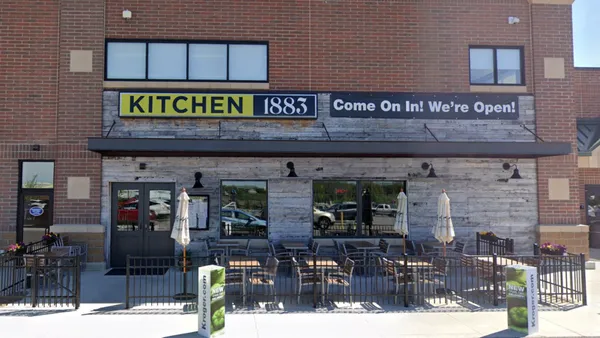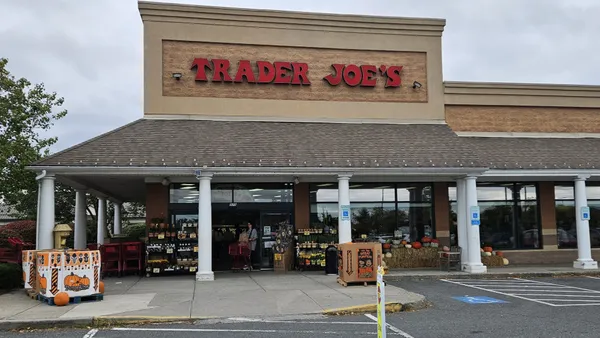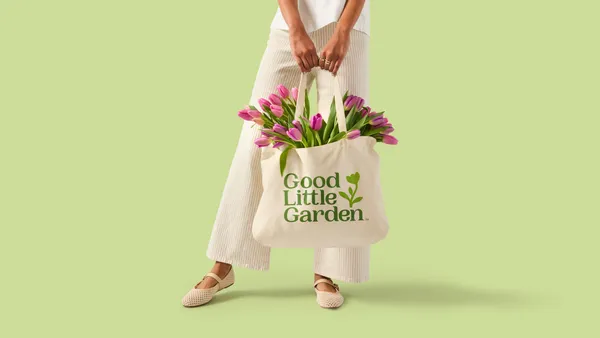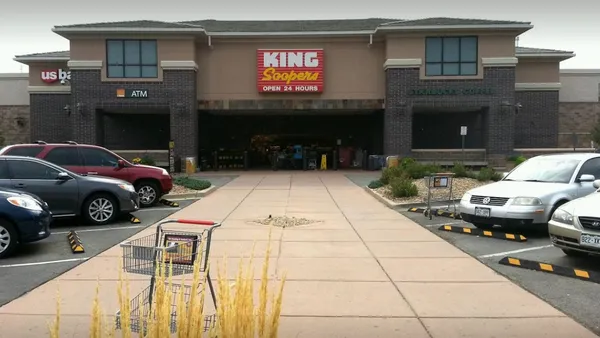Grocery hasn’t always been Target’s strong suit, nor has digital growth. But the company is putting a renewed focus on both as it seeks to compete with big-name competitors and deepen loyalty among its core shoppers.
Starting this spring, Target plans to offer fresh groceries like milk and eggs for in-store and curbside pickup at select Minneapolis-area stores. It plans to expand availability throughout the year, with half of its 1,800 locations offering the service by the holidays.
Target will also offer alcoholic beverages, another high-volume category, through its Drive Up and Order Pickup services. The rollout will start with more than a hundred stores in Florida and Oregon before expanding to a majority of the retailer's footprint by year's end.
These developments round out Target's e-commerce strategy in grocery, adding food and beverage service to the company's Shipt home delivery offering, which is now available from all stores. It also builds on two fast-growing assets. Drive Up's sales grew 500% last year, largely thanks to an accelerated rollout that brought the service to 1,750 total stores, while Order Pickup sales grew 50% during the same period.
"Today, Target can put a gallon of milk in your fridge but not in your trunk," Target CEO Brian Cornell said during the company's investors' day presentation Tuesday. "In 2020, that's going to change as we start to test our fresh Pickup and Drive-Up capabilities and scale as we go."
Same-day delivery and pickup are key to Target’s digital success, the retailer explained. The retailer found that same-day shoppers are making more trips to the store and spending more money per trip. Last year, only one in three people who placed a same-day order had never before shopped on Target.com. Following a shoppers’ first pickup trip, Target is seeing overall spending go up almost 25%.
The announcements elevate the importance of grocery for Target after years of playing a background role to apparel, home goods and other departments. Executives said the company will continue to forge partnerships with brands like Boar's Head, which is rolling out grab-and-go deli selections to 200 stores. Stores will also see a growing assortment of Good & Gather products, the retailer’s flagship food and beverage brand that launched last year. By the end of 2020, Good & Gather will include more than 2,000 products, from dairy to produce, ready-made pastas to granola bars and beet hummus. The line will replace its Archer Farms and Simply Balanced brands.
In addition to gaining traction in pickup, Target's same-day delivery from Shipt saw sales more than double over the year prior. The company is promoting the service heavily in stores, with standalone signage, checkout pamphlets and stickers posted on freezer doors. It also features prominently on Target.com and allows guests to use their RedCard to get 5% off and pay per order if they don’t have an annual membership.
Store remodels and smaller formats
Since 2017, Target has spent $4 billion remodeling more than 700 stores, and this year it will bring that number to 1,000. In 2021, it will adjust its pace to remodeling 200 to 300 stores every year going forward.
Its remodels include testing design elements to its front of store concept. To provide a welcoming first impression, Target is adding fresh flowers and hot coffee near the entrance. It's also lowering walls and removing counters to make it easier for employees to offer shoppers help.
Cornell and other Target executives said the remodels are boosting basket sizes as shoppers add more discretionary items. The retailer is also changing its stores to accommodate for the increase in e-commerce by transforming them into fulfillment hubs and service centers.
“Using our stores as local hubs continues to be the right strategy for us," said John Mulligan, Target's chief operating officer, during Tuesday's presentation. "Our stores today are handling about 80% of our online volume. And for Target, that's the sweet spot."
Between 2020 and 2021, the retailer will open a few new warehouses in key markets including New York and Southern California. It will also scale robotics technology it's been testing that stores and sorts products on an aisle-by-aisle basis, helping associates get items on shelves quickly while reducing backroom inventory.
Like many retailers, Target also sees increasing promise in smaller stores that can fill out population-dense markets. It plans to open around three dozen small-format stores this year and about 30 annually going forward. It also plans to open a raft of stores that are 6,000 square feet, or roughly half the size of its current small store fleet. Executives said they will start signing store leases later this year and open the first new store in 2021.
Collectively, Target's small-format stores have generated more than $1 billion in annual sales, and per square foot are much more productive than its average stores, Cornell said.
“Remember when we opened just one small-format store back in 2014 and then opened only a few more the next year?" Mulligan said. "We took it slow to learn and build the right foundation so we could scale those stores to fully refine how to find sites to balance population density and local needs."
On Tuesday, Target reported fourth-quarter comparable-store sales of 1.5% and said it expects comps in the low single digits throughout 2020 as it builds out store-based and online services.
Industry observers were mostly positive on the retailer's outlook and strategy, though they expressed caution over the effects of the coronavirus. In a note to clients, analysts at R5 Capital said Target should gain grocery share with its pickup, delivery and in-store evolution. They also credited the company with updating its supply chain technology and store fleet.
"We believe Target has outlined a solid strategy to flex its current asset base, improve its fulfillment capabilities and is quite in tune to a consumer that is becoming more channel agnostic," the analysts with R5 wrote.













